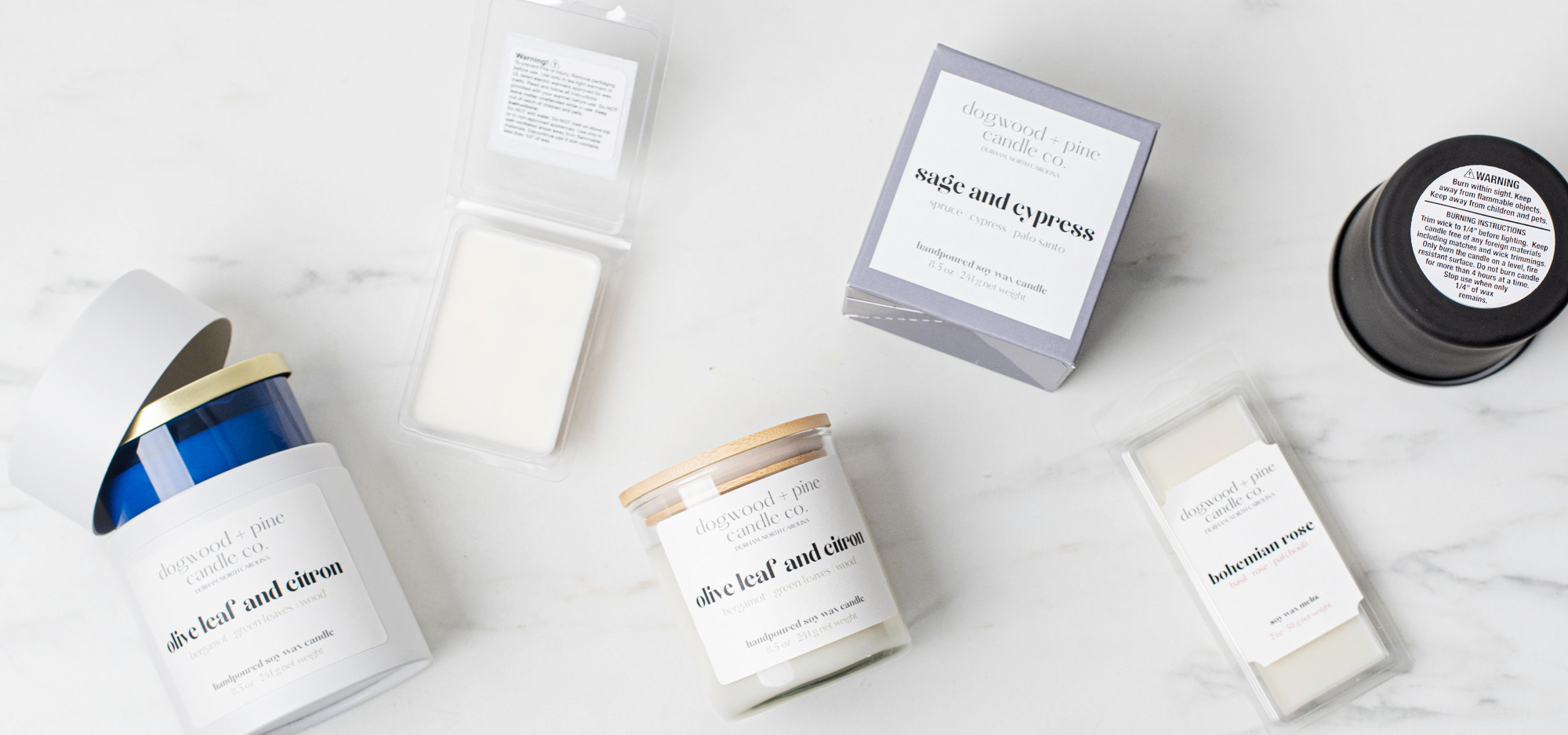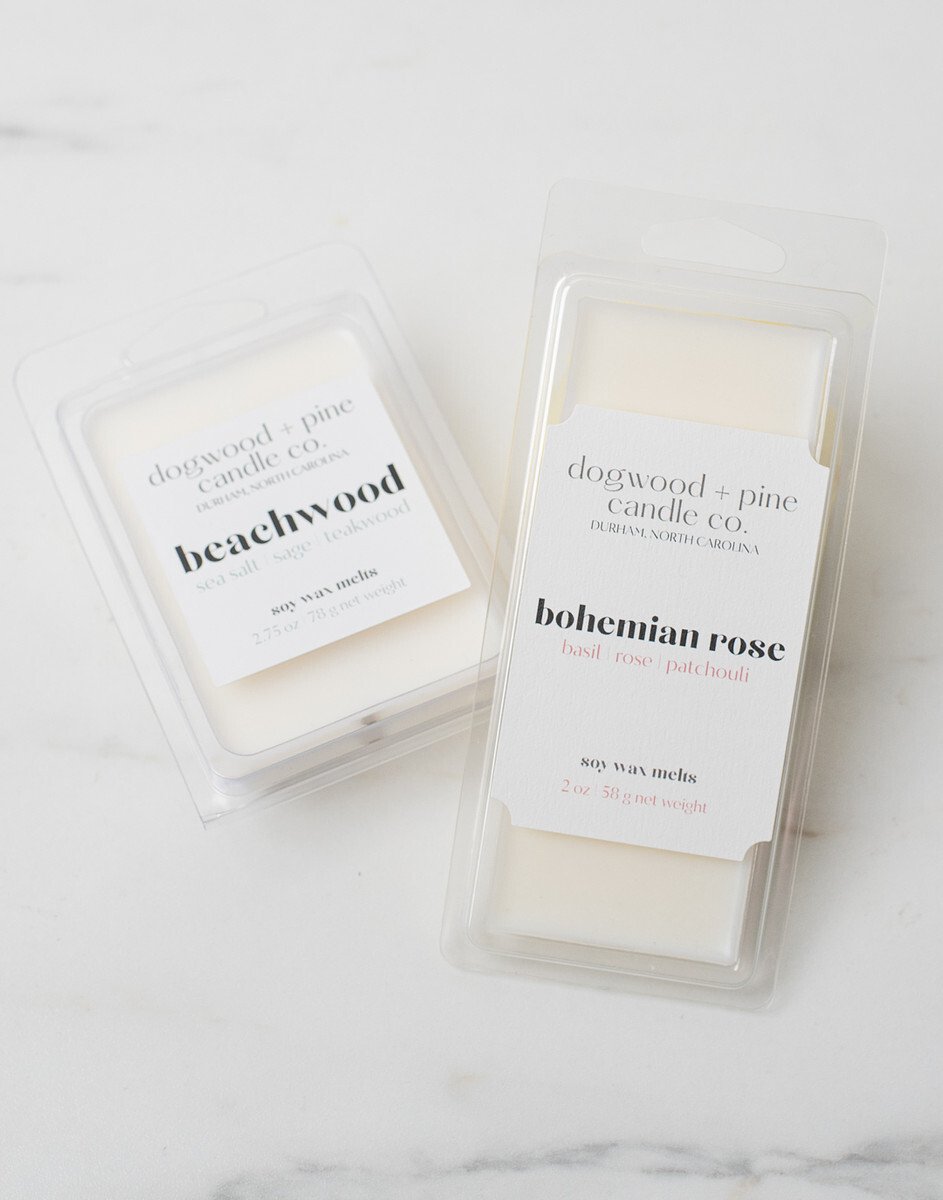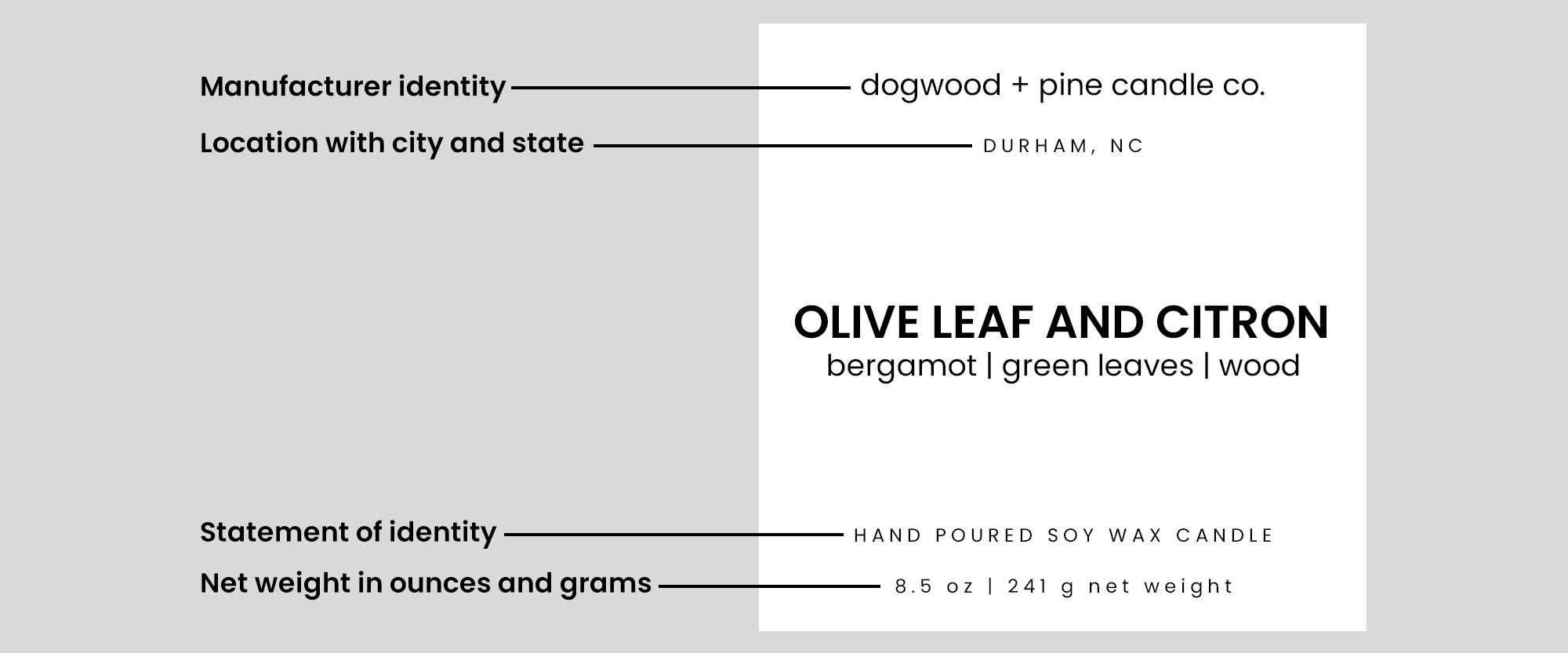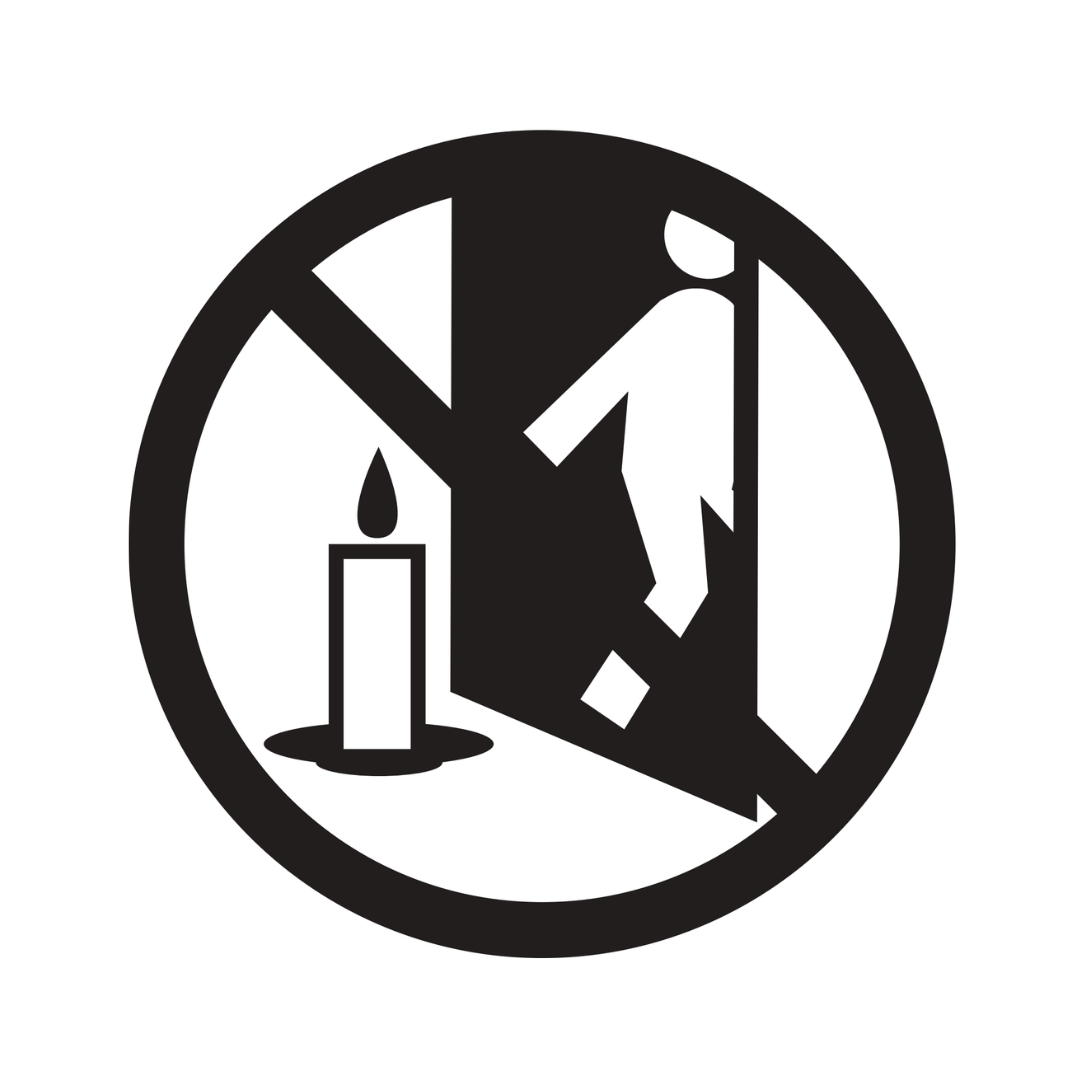The essential guide to candle label requirements Everything you need to know to properly label your candles and wax melts!

Understanding the intricacies of candle label requirements is essential both for legal compliance and consumer safety.
This article covers the guidelines to know when labeling candles and wax melts in the United States so that your products meet the standards meant to inform and protect customers.
An overview of candle labeling requirements
Before we get into the different types of labels, and the specific information that should appear on them, let’s review who sets candle label requirements and why these guidelines exist.
Candles and wax melts must have a primary label on the outer packaging or the product itself. Most candles on the market also have a warning label.
The Fair Packaging and Labeling Act (FPLA) dictates the information a company must include on a product’s outer packaging and main label. The FPLA regulations assist consumers when shopping, protect them from misleading or incomplete product information, and ensure transparency in labeling practices.
Four groups set the contents of candle warning labels: the National Candle Association (NCA), the American Society for Testing and Materials (ASTM), the Federal Hazardous Substances Act (FHSA), and the Consumer Product Safety Commission (CPSC). The information on these labels aims to minimize potential danger by focusing on safety practices and burning instructions.
Label types for container candles and wax melts



Now, let’s look more closely at the different types of labels typically used with candles.
Outer packaging
Not all candles come with outer packaging. Makers often forgo the expense of outer packaging when pairing their candle jars with lids. However, pillar candles and taper candles, along with some high-end candles, usually have some sort of outer packaging.
When makers use outer packaging, they often go with a box or tube. The product information is then either printed directly onto the surface or applied as a label.
Main label
Also called the primary label, this is the label we’re all familiar with. It’s typically attached directly to the candle container or wax melt clamshell.
For containers without a smooth surface, a tag that attaches to the product can act as the main label.
Warning label
Last, but certainly not least, is the warning label!
This label is usually found on the bottom of the candle container. Warning labels for wax melts are often placed on the inside of the clamshell.
The mandatory information for primary candle labels

So, what do you need to include on your primary candle labels? Per the FPLA, these three pieces of information are necessary: the statement of identity, the net weight, and the manufacturer identification.
Statement of identity
Simply put, this is exactly what the product is. Examples include:
- Scented candle
- Candle
- Hand poured candle
- Wax melt
- Wax tart
The FPLA doesn’t require you to include the type of wax and scent name, but that information helps shoppers make their buying decisions so we recommend including it!
Want to make it even easier for shoppers to say yes to your candles? Consider including the main fragrance notes and the average burn time on the primary label, too. Use the label as a way to sell your product, while also providing the necessary information.
Net weight
The net weight reflects the weight of the wax, fragrance, and any dyes used to create the candle. It’s listed on the main label in both standard and metric measurements, which are ounces and grams.
Examples of how to express the net weight include:
- 8.5 oz (241 g) net weight
- Net weight: 10 oz / 283.5 g
- 24 ounces/680 grams net weight
The net weight does not include the weight of the wick, candle container, clamshell, or other packaging. Listing the entire finished candle or melt weight on the label does not satisfy the net weight requirement.
Manufacturer identification
Proudly put your brand or business name on the label as the candle manufacturer!
Along with the name, the FPLA also requires the manufacturer location by city and state. However, this information can be included on the warning label instead as FPLA 500.2 allows for this exception.
Safety first: fire safety labeling for candles


This may come as a surprise, but including safety information on candles is not legally required.
However, it’s not only highly recommended that your candles come with safety labels, it’s something most candle shoppers expect to see. Omitting a warning label on your candles or melts could affect consumer trust and perception of your brand.
On the flip side, encouraging candle fire safety and providing burning instructions demonstrates your commitment as a maker to your customers’ well-being. The presence of a warning label can also be used against customers who misuse your candles.
Since we always recommend using warning labels on your home fragrance products, let’s explore what should be on them.
The critical safety statements
The ATSM strongly suggests that candle warning labels prominently display the word WARNING in boldface and uppercase letters.
The CPSC and NCA then advocate for using these three ASTM-approved statements:
- Burn within sight
- Keep away from things that catch fire or Keep away from things that burn
- Keep away from children
Lastly, the FHSA recommends listing burning directions on warning labels that include notes about trimming wicks to ¼ inch height before burning and maximum burn times.
If you’d like ready-made candle warning labels with all of these safety statements, check out these professionally printed options:
And don’t forget warning labels for wax melts, if you make them!
Additional caution symbols
While Burn within sight must appear in writing on fire safety labeling, you may use pictograms in place of text for the other two safety statements.
Download the safety symbol pictograms shown below from the National Candle Association site.



Label design tips and resources
- Consider label size: Be sure the label size fits the container or packaging appropriately for visibility and clarity. Take into account the relationship between label size and packaging dimensions.
- Use readable fonts: Select fonts that are sized for easy readability. Opt for clear, legible fonts that enhance consumer understanding of important information.
- Refer back to FPLA guidelines: Familiarize yourself with the FPLA guidelines to comply with label size, font size, and other requirements.
- Partner with Avery WePrint: Choose from a wide range of label styles, sizes, and finishes to make custom labels that match your brand aesthetic. CandleScience customers save 10% on every order!
Key takeaways
While understanding candle labeling requirements and guidelines takes patience and effort, we hope this article has helped make the topic more understandable.
Just remember:
-
Outer packaging and main candle labels must comply with standards set by the Fair Packaging and Labeling Act and include:
- A statement of identity (aka the type of product)
- The product’s net weight in ounces and grams
- Manufacturer identification details
-
Warning labels are highly recommended and should include these three critical safety statements from the Consumer Product Safety Commission, the Federal Hazardous Substances Act, the National Candle Association, and the American Society for Testing and Materials:
- Burn within sight
- Keep away from things that catch fire or Keep away from things that burn
-
Keep away from children
-
Consider including these additional product details to help shoppers better understand your product and connect with your business:
- Type of wax
- Fragrance name
- Main fragrance notes
- Burn time
- Your website and social media handle
While we do our best to provide information that is helpful and accurate, it’s important to remember this article is not intended to be a substitute for legal advice. If you have any specific questions or concerns, please contact a qualified attorney.
Have any questions or thoughts about labeling your products? Let’s hear them in the comments below!
And if you’re interested in more candle business content, be sure to check out our Business Guides. There you’ll find a variety of articles on topics like starting an email list, selling at markets and craft shows, shipping candles, and lots more.